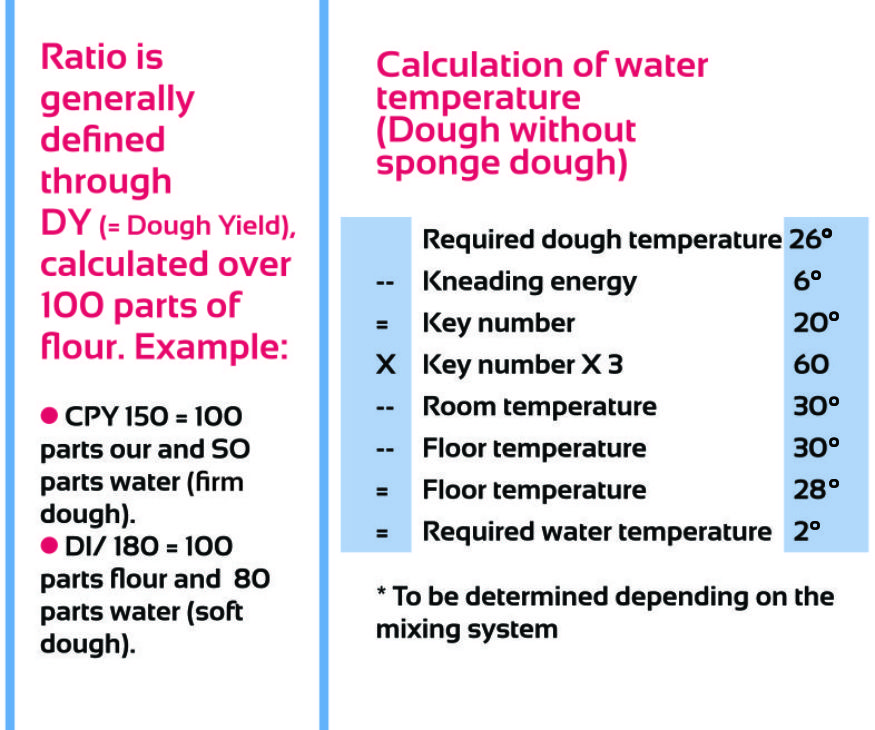
What does baking mean? Baking means turning the ingredients of water, flour, yeast and salt into tasteful products. Great importance is placed on adherence to the recipe. Accurate weighing of ingredient and correct dough temperature are crucial for achieving the final result. Dough mainly consists of water, flour, yeast, salt and baking agent.
Water
The water absorption capacity is mainly defined by the quality of the flour, but also the mixing system. The baking agents have an influence on the process. Beside the amount of water, the temperature of the water is very important. With this, the temperature of the dough is decisively influenced. The recommend dough temperature is 24 – 26°C.
Flour
There are various types of flour. There are light types of flour such as wheat and dark types such as rye. All types of flour can contain different percentages of husk. Unfortunately, there are large fluctuations in the quality of flour in most of the countries.
Wheat flour consists of approximately.:
• 59 – 72% carbohydrates (starch and semi-liquid substances, including 2.4 – 7 % dietary fibres)
• 14 – 15% water
• 10 – 12% protein (of which 80 % is gluten and 20 % soluble protein)
• 0.9 – 2.3% fat
• 0.4 – 1.7% mineral salts
Yeast
A very important process in dough preparation is dough leavening. This aerates the bread and gives it more volume. Traditionally, dough is leavened biologically through the addition of yeast or through using natural sour dough which contains lactic acid bacteria as well as yeast. Dextrose, which is naturally present in small quantities in flour and is also created through starch degradation, forms the “nutrition” for yeast and lactic acid bacteria. Whilst the dough is resting, the dextrose is fermented by the yeast and the lactic acid bacteria. The leavening gas carbon dioxide (CO2) is created as a result. The gluten structure in the dough traps the gas in the dough and prevents it from escaping. During baking, the leavening gas expands through heating, the loaf “rises”.

The gas disperses and what remains is the typical porosity of a baked product. Yeast and lactic acid bacteria are sensitive living organisms. The baker needs to know precisely what the organisms need for their well-being so that they can fulfil their tasks in the dough. Yeast, for example, needs a specific temperature for dough resting (between 25 and 32°C) in order to achieve the best multiplication in the dough and so that leavening gases can be formed. Yeast is a facultative anaerobe. It can work with and without oxygen.
Salt
Salt is not a raising agent. However, it does help the effect of the raising agent. In the case of wheat pastry and bread, the salt has a gluten-stabilising effect. Without salt, the bread would collapse or become completely hard. With rye products, salt prevents them from becoming oily or greasy. And, of course, without any salt, the bread or pastry would simply be tasteless.

Baking agent
The flour quality and therefore the baking result can be influenced by the baking agent.













